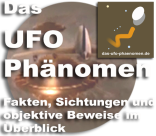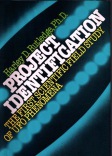
Trying to prove the existence of UFOs is usually an exercise in frustration. By the time a sighting can be investigated, the alledged object is long gone – out of the range of cameras, measuring instruments and professionally-qualified researchers.
But in 1973, when residents in and around Piedmont, Missouri, began reporting lights in the sky, Dr. Harley Rutledge - head of the Physics Department at a nearby university - decided to subject these reports to scientific scrutiny. He put together a team of observers with “college training or equivalent experience in the physical sciences” and a battery of equipment: Questar telescopes (whose magnifying power could change without replacing the eyepiece), an electromagnetic frequency analyzer, high-frequency, low-intensity cound detector, and high-quality camera equipment.
The resulting Project Indentification has been operating ever since, logging hundreds of hours of observation time. At last, trained experts were able to investigate UFOs while the phenomena were actually in progress and record the data in a scientific, objective manner - enabling Dr. Rutledge to calculate the objects’ actual velocity, distance and size.
But Project Identification’s data raised more questions than they answer. One night, for example, a single light was observed crossing the sky - yet photos of it show a series of trails. Observation of the unclouded sky often revealed “pseudostars” - stationary lights camouflaged by familiar constellations. Some objects appeared to mimic the appearance of known aircraft; others flagrantly violated the laws of physics. But most unsettling of all were the lights that repeatedly seemed to react to the project members observing them.
Initially a skeptic on the subject of UFOs, Dr. Rutledge here presents a full report on Project Identification's ground-breaking work and what its findings imply. Fully illustrated with unique photographs, explanatory line drawings and diagrams, this is the only book to provide hard, factual data from direct observations of the UFO enigma.


